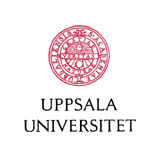|
Reuse Within a Cell -
Interference Rejection or Multiuser Detection?
Claes Tidestav
,
Mikael Sternad
and
Anders Ahlén
IEEE Vehicular Technology Conference (VTC'99)
Houston, TX, May 16-20, 1999, pp 1618-1622. © 1999 IEEE
-
Outline:
-
In a cellular communication system, multi-element antennas, also known
as antenna arrays, can be used at the receiver to increase the
capacity. It may even be possible to employ
reuse within a cell, i.e. to let several users
share each channel in one cell.
In this paper, we illustrate, compare and explore two ways of using an
antenna array at the receiver to accomplish channel reuse within a
cell:
- Detect data from one user at a time while treating the
other users as interference. This approach is
denoted interference rejection
or interference cancellation .
- Detect the data from several of all users simultaneously.
We call this method
multiuser detection.
The performance of
(nonlinear)
multiuser detectors mostly turns out to be
superior to that of interference cancellers,
for two reasons:
- They can suppress
interference more efficiently than non-linear
interference cancellers.
- The channel estimation is improved,
which leads to more precise tuning of the detector.
We illustrate the influence of these two
factors by comparing two types of
minimum mean square error-optimal
decision feedback equalizers
(MMSE DFE:s) in FDMA/TDMA systems.
-
Abstract:
-
We investigate the use of
an antenna array at the receiver in
FDMA/TDMA systems, to let several users share one communication
channel within a cell. A decision feedback equalizer which
simultaneously detects all incoming signals (multiuser detection) is
compared to a set of decision feedback equalizers, each detecting
one signal and rejecting the remaining as interference.
We also
introduce the existence of a zero-forcing solution to the
equalization problem as an indicator of near-far resistance of
different detector structures.
Simulations indicate that multiuser detection in general provides
better performance than interference rejection. We have
applied the proposed algorithms to experimental measurements from a
DCS-1800 antenna array testbed. The results from these experiments
confirm that reuse within a cell is indeed possible using
an eight-element array antenna at the receiver.
-
Related publications:
-
PhD Thesis by Claes Tidestav.
IEEE-COM paper and
report version, with
derivations and measurements.
ICASSP'99
paper on MIMO IIR DFE's.
ICUPC'98
paper on bootstrap equalization.
ICUPC'96 paper on MIMO DFE's as
CDMA multiuser detectors.
-
Source:
-
Paper in Pdf, 415K.
Presentation slides in Pdf.
|
Related research
|
Main
entry in list of publications
|
Personal use of this material is permitted.
However, permission to reprint/republish this material for
advertising or promotional purposes or for creating new
collective works for resale or redistribution to servers or lists,
or to reuse any copyrighted component of this work in other works
must be obtained from the IEEE.
|

